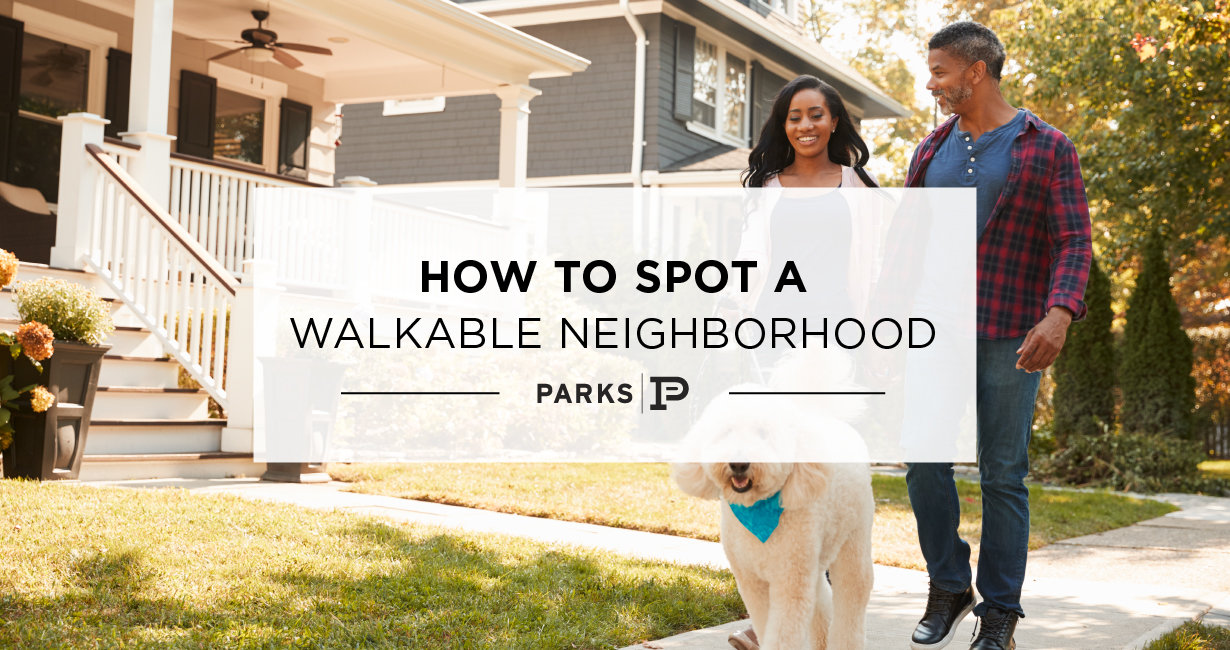How to Spot a Walkable Neighborhood
Posted by Jenni Barnett on Friday, May 14th, 2021 at 3:19pm.

In many regions of Tennessee, residents definitely need a vehicle to get around. Sprawling cities, patchy sidewalks, limited public transportation, and a lack of proper pedestrian infrastructures can make walking a challenge and a potential safety hazard. However, given the personal and environmental benefits of walking daily, it’s well worth it to dedicate some extra time when house hunting to find a home in a walkable neighborhood.
Why walk when you can drive?
Walking often reduces body weight, elevates the mood, improves balance, strengthens muscles, improves bone density, and develops coordination over time. Walking can fend off heart disease, reduce high blood pressure, and improve our body’s response to insulin, which, along with lowered body weight, helps prevent diabetes.
Overall, walking is one of the forms of exercise doctors recommend most, and it’s not hard to see why. It’s low-impact, easy for fitness beginners (yet also beneficial to elite athletes), and it’s free!
Of course, the environment benefits every time we refrain from driving fossil-fuel-dependent cars. When we drive, we’re adding about 20 pounds of greenhouse gas to the atmosphere with every gallon burned.
All told, personal transportation in the United States is responsible for almost a full fifth of the country’s total CO2 emissions. We know a healthy planet is the best way to keep Tennessee beautiful, which means that every time you choose to walk, you’re benefitting your community as well.
Today, we’re sharing our insight regarding how to spot a walkable neighborhood. There are some key factors that determine how easy it is to navigate an area on foot.
Look for the following features:
1.) A Defined Central Area
Whether it’s a village center, quaint main street, or bustling downtown, walkable areas have a central “hub” around which activity takes place. If the community you’re considering lacks a discernable “town center” and instead has amenities sprawled out over a large area, you can assume that walkability is not this spot’s strong suit.
2.) Sufficiently Dense Population
If you’re looking at a home whose nearest neighbor is 0.3 miles away, it’s highly probable that you’re not in a very walkable area. You don’t have to go for a high-rise, but a location that has some apartment buildings or even college dorms (if you’re amenable to living in a college town) is likely going to feature better walking destinations than a more rural area. Regions that bring people together into a denser configuration will be more likely to support pedestrian traffic.
3.) Mixed-Purpose Structures
Keep your eyes peeled for areas that place retail, grocery stores, medical offices, coffee shops, churches, libraries, veterinarians, restaurants, and pet supply stores close to residential zones. Unless you only want to walk your neighborhood for exercise, these mixed-purpose concepts will be key. Without walkable amenities, you’ll likely find yourself behind the wheel of your car, even on the weekends.
4.) Public Community Spaces
Parks, walking and hiking trails, public museums, and community centers are all features that are good indicators of walkability potential. If these amenities are present alongside retail and doctors’ offices, you are far more likely to be homing in on a spot that caters to foot traffic.
5.) Pedestrian-Focused Architecture and Street Design
If retail and medical buildings are accessible from sidewalks, with parking lots set back behind them, they tend to be much easier for pedestrians to navigate. Look for complete sidewalk networks, frequent crosswalks, and brightly lit streets.
These pedestrian-centric designs will enhance your safety and comfort while you walk.
6.) Optimal Proximity of Workplaces and Schools
Even if you do not have school-aged children, or don’t plan to walk to and from work, the presence of nearby schools and workplaces can indicate that the area you’re considering understands that walkability matters.
By not taking it for granted that every resident will choose to drive at all times, the city is signaling an understanding of pedestrians and their needs.
7.) Real-Time Pedestrian Activity
Even if a region looks highly walkable on paper, you may arrive in person and notice that there is little, if any, foot traffic.
Before assuming that residents aren’t interested in walking, or choose not to walk, consider that there may be hidden factors that prevent locals from navigating the city on foot.
Is it safety? Lack of walkable destinations? Inhospitable street design? Play detective, and, if possible, attempt to walk the area at various times of day on different days of the week.
More often than not, a truly walkable region will feature lots of residents walking around!
Increasingly, walkability is becoming a key feature for real estate investors. In Middle Tennessee, there’s a chasm between the demand for mixed-use, walkable neighborhoods and the available real estate in such places. As a result, cities are slowly making more areas pedestrian-friendly. However, you should still prepare to pay a premium for a prime walking spot.
Have you purchased a home in Middle Tennessee in the last five years? If so, how would you rate your neighborhood’s walkability on a scale of 1 to 10? Has your area become more or less walkable since you’ve moved in? Please leave us a comment below to answer these questions for this year’s motivated buyers. If you have any advice you would like to add to today’s article, we welcome your contribution!
Thank you for visiting Parks. If we may be of any assistance in your search for a highly walkable home location, please contact us directly. Our agents can help you navigate the complexities of purchasing a home that’s a wise investment on this and a myriad of additional fronts.







